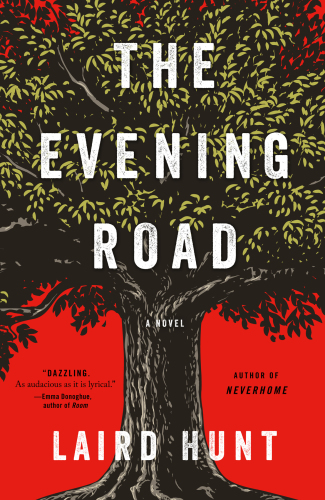
The Evening Road
کتاب های مرتبط
- اطلاعات
- نقد و بررسی
- دیدگاه کاربران
نقد و بررسی

October 31, 2016
At once dreamily timeless and fitting for the current national moment, Hunt’s (Neverhome) hypnotic latest takes place on one evening in August 1920, when two equally strong—and scarred—women cross paths in Indiana. Ottie Lee Henshaw is at work when her boss reports that townspeople in nearby Marvel are planning to lynch several black youths accused of crimes against whites. Elated, he gathers Ottie Lee and her husband, Dale, and the three (all of whom are white) set off for the “rope party.” Their trip is constantly interrupted—by the lure of a catfish supper, a car accident that leaves them walking, and a chance ride that delivers them to a Quaker prayer vigil instead of the lynching—as Ottie Lee’s vibrant facade slowly cracks to reveal her deep fears. Meanwhile, black teenager Calla Destry goes to the river near Marvel to meet her ambitious white lover who calls himself Leander. When he doesn’t show, she takes her foster father’s car and rides off to escape Marvel’s angry mob and find Leander for an urgent conversation. As her mind shifts between past and present, real and imaginary, Calla’s journey reveals the secrets she hides. Though the novel’s meandering odysseys sometimes feel frustrating, Hunt’s striking prose and visionary imagery capture America’s community bonds, violent prejudices, falling darkness, and searing light.

Starred review from November 1, 2016
In 1920 Indiana, a threatened lynching becomes a magnet for two women navigating different physical and emotional paths in this engrossing work."You are speaking in originalities," says the heroine of Hunt's previous novel (Neverhome, 2014, etc.). The line applies as well to the book's well-crafted writing, rich plot, and doughty lead, a woman disguised as a man in the Union Army during the Civil War. Hunt's new book raises his own high bar further with an almost fablelike view of prejudice and cruelty some 60 years after emancipation. He calls whites cornsilks and blacks cornflowers, so the lynching stems from this allegation: "Some cornflowers shot a cornsilk and set a hundred houses on fire." The cornsilks head for the town of Marvel expecting to enjoy a "rope party." One group's adventures along the way are narrated by Ottie Lee Henshaw, secretary to a businessman and wife to Dale, owner of a massive pig. They get a flat tire, commandeer a mule-drawn wagon, visit a church supper and a prayer meeting, and find out more about themselves than they expected. The book's second big section is narrated by Calla Destry, a tough teenage cornflower orphan who has been taken in by a local black couple and then, in other ways, by a smooth-talking cornsilk. That's the man Calla sets out to find because she's in trouble. Her meanderings occupy roughly the same time frame as the first half, while her different route intersects the others' in intriguing ways. The split-screen view highlights and breaches the racial divide. The lynching remains mostly offstage. Hunt finds history or the big events useful framing devices, but he is more interested in how words can do justice to single players and life's fraught moments. Hunt brings to mind Flannery O'Connor's grotesques and Barry Hannah's bracingly inventive prose and cranks. He is strange, challenging, and a joy to read.
COPYRIGHT(2016) Kirkus Reviews, ALL RIGHTS RESERVED.

December 1, 2016
A rural town in Indiana in the 1920s has had more than its share of racial tensions. It is a cauldron of racist excesses and mounting resentments and resistance. One sultry evening, the town is stirred up by the prospects of a lynching in nearby Marvel, and residents get to the roads, some rushing to the event, others rushing away, all of them caught in dramas large and small. Ottie Lee Henshaw is a woman in her thirties of good looks and a smart mouth, managing an uninspiring husband and a lecherous boss. Their travel to the lynching is a comedy of errors and mishaps as they cross paths with fortune-tellers and moonshiners. Sixteen-year-old Calla Destry, orphaned and living with a local family, is also on the evening road, focused on meeting a lover and the promise of a different future. She too crosses paths with an assortment of characters in what one calls a big night full of mysteries. Critically acclaimed Hunt (Neverhome, 2014) offers fascinating characters and the subtlest of life-changing moments.(Reprinted with permission of Booklist, copyright 2016, American Library Association.)

September 15, 2016
A strong indie author (Kind One won the Anisfield-Wolf Book Award), Hunt broke out with the big-house Neverhome, inaugural winner of the Grand Prix de la Litterature Americaine. In the 1920s, small-town Indiana beauty Ottie Lee Henshaw escapes her husband and leering boss by taking a cross-country journey. Soon she encounters Calla Destry, a young woman looking for her lover. With a 40,000-copy first printing.
Copyright 2016 Library Journal, LLC Used with permission.

























دیدگاه کاربران